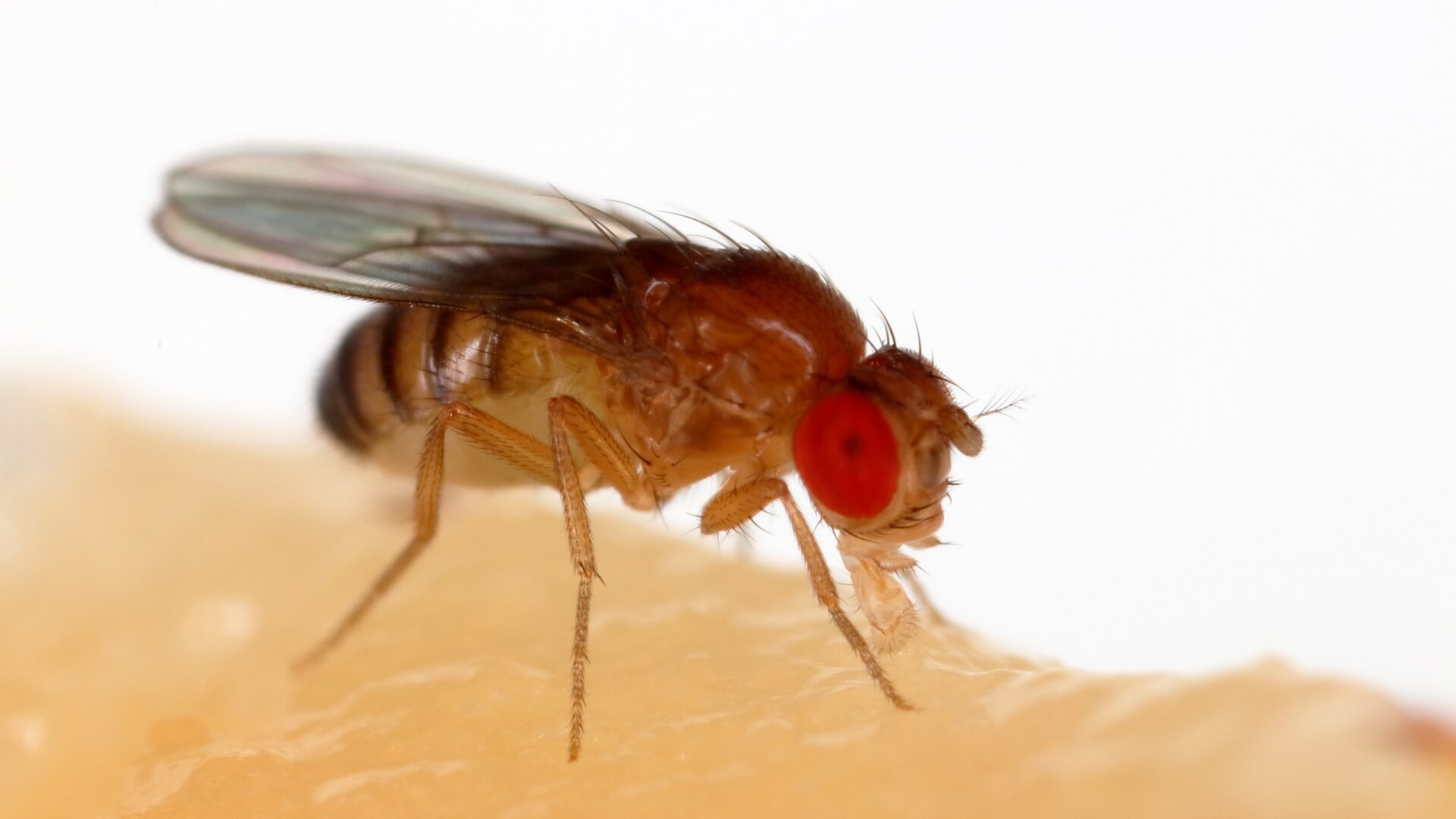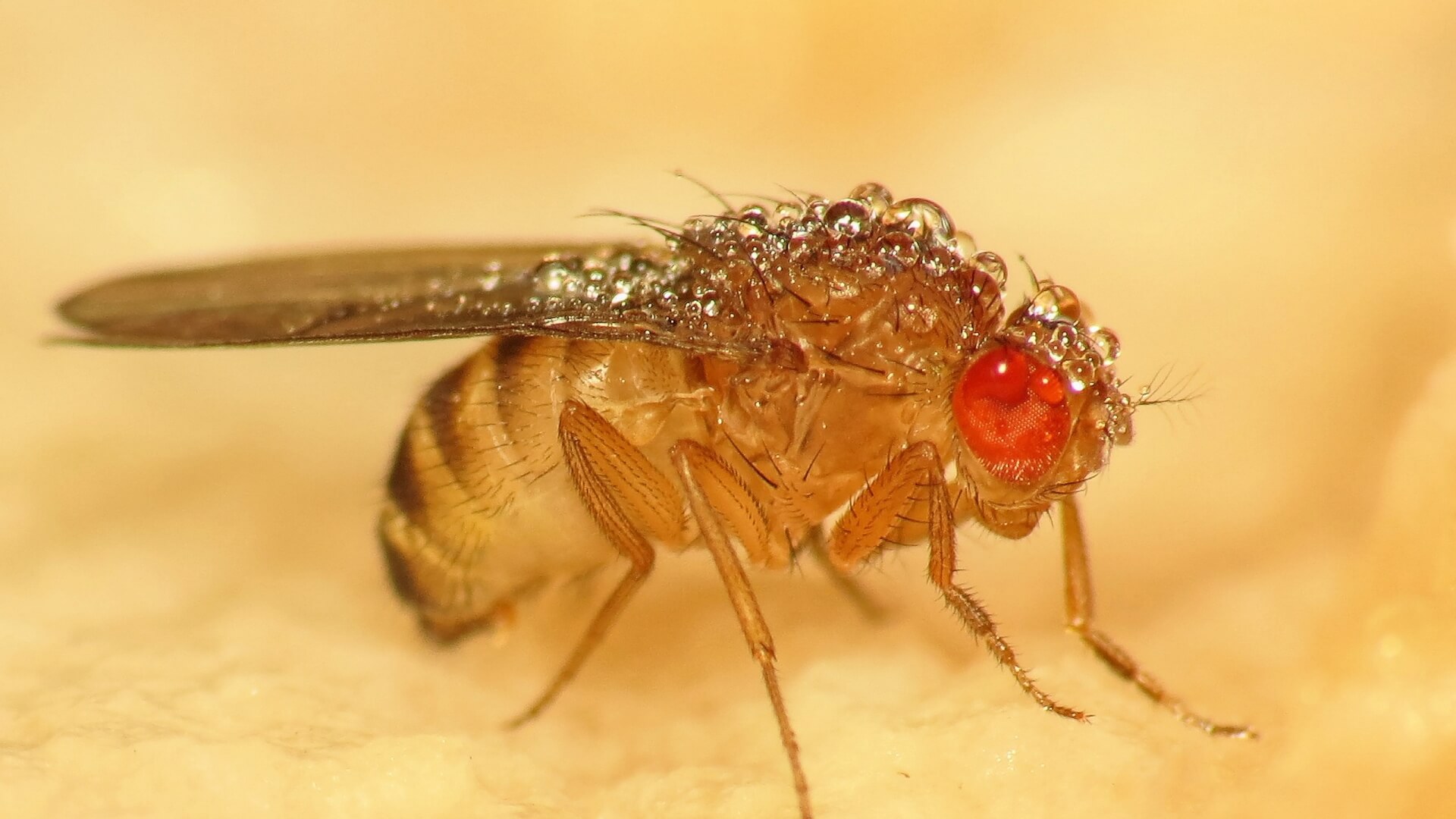These tiny critters can drive us crazy as they swarm out a fruit dish in which a banana has been ripening for a while. Less than 4 mm long, fruit flies are insects that seem to have a knack for invading our kitchens. But as many wise men have said, if you know your enemy, you need not fear the result of a hundred battles.
Where do fruit flies come from?
Fruit flies have been colonizing every corner of the planet since humans started exporting fruit from warmer, tropical countries to colder ones.
On a more microscopic level, fruit flies are capable of quickly infesting your kitchen. It’s no wonder: the tiny critters lay around 35 eggs a day! When you’re bringing fruit home, you’re also bringing home fruit fly eggs. In the presence of a tiny bit of fermenting liquid fermentation, these microscopic eggs will hatch. It is a very fast process, for once hatched, the larvae become flies after 5 to 6 days. The entire breeding cycle lasts only 10 days.
How do fruit flies come out of nowhere?
You’re not the first person to pose such a question and certainly won’t be the last! In the past, people actually did believe that all flies simply spawned out of nowhere, with filthy conditions leading to them spontaneously pop into existence in a supposed process once known as ‘spontaneous generation’.
Since it was quite difficult to witness flies laying eggs, most people never doubted this theory, at least up until the 17th century, in 1668, when Italian scientist Francesco Redi published experiments in which he put fish and meat in jars, some of which he covered, and others which he left open. It may seem painfully obvious to us today, but the ones that were left uncovered got eggs on them, the ones that were covered ones did not. Boom, science.
The eggs will mature and hatch, resulting in the emergence of a larva. The larva eats and grows for about a week, and then will form a pupa, which is a hard, immobile shell. Inside, the larva will go through metamorphosis, like a caterpillar does to become a butterfly, and then, a few days later, will hatch out as an adult fruit fly. The adults will mate and the adult female flies will lay their eggs, and the dreadful cycle will continue.
How do fruit flies get in the house?
Now we know fruit flies simply don’t come out of nowhere. Well then, how’d they get into your house? The explanation is quite simple. The fruit flies you find in your home most likely come from one place; your fruit.
Most insects, including fruit flies, rely strongly on scents in the air to find the essentials of life (mates and food). It takes only a few molecules in the air to alert fruit flies to the presence of food. Attracted by the scent of the acetic acid and ethyl alcohol that result from the fermentation of the sugars in rotting fruits, fruits flies will travel long distances to uncover the source of these scents.
Fruit flies are tiny, which allows them to sneak in pretty much anywhere through small crevices and cracks throughout your home. A closed window is no match at all for a fruit fly. After slipping into your home, they generally go unnoticed when flying around as individuals. But all it takes is for a single impregnated female fruit fly to enter your home through a crack in your screen or an open door and lay her eggs on a piece of rotten fruit for you to have an infestation of them, thus spawning hell and annoyance, and becoming very noticeable indeed.
Additionally, most fruit you buy at the grocery store is already endowed with at least a couple fruit fly eggs on it unless it’s been washed thoroughly or is covered in a lot of pesticides. Certain fruit fly larvae will even burrow into the fruit to hide in cracks, and the persistent critters have adapted to become less sensitive to lower temperatures, meaning many species’ eggs and larvae can survive refrigerator temperatures for hours, and even days. In turn, it’s inevitable that they will be found on most store produce, and consequently, you’ve always got a few fruit flies hitching a ride home with you and your groceries. So, yes… you may very well be routinely eating them. But hey, just call it insect caviar!
Where do fruit flies come from in the kitchen and in the bathroom?
They may be called fruit flies, but your fruit bowl isn’t the only place they tend to call home. Fruit flies need three essential things to live: a food source, moisture and humidity, and a place to live ad breed in.
Your kitchen drain is the perfect spot, offering the whole shebang. It’s dark ad moist, making it a nice secretive and humid breeding ground. And it’s got plenty of food for them. You maybe be wondering what kind of fruit your sink offers, but don’t let their name deceive you.
Fruit flies consume all kinds of decaying matter. The thick, slimy gunk and grime and organic debris coating the drains of your kitchen are perfect sources of energy for the little pests. They’ll also use it to lay their eggs, hundreds at a time, if you’re unlucky. This is where all of them come from. If you pay attention, you might notice them buzzing in and out of your drain once in a while.
The same applies to your bathroom drains. Except your bathroom offers even more yummy decaying organic matter and grime, tucked in numerous places besides the shower or sink drains in your bathroom. Wet towels, rags, garbage bins, and shower curtains, as well as crevices in your bathroom all offer the moisture, food and darkness the fruit flies need.
Where do fruit flies come from during the winter?
You’d expect them all to die off during a harsh, cold winter. But who hasn’t experienced this situation: an insect invasion of your house in winter. It’s a situation experienced every year from the beginning of autumn. It happens all too often that insects decide to spend the cold season in your homes. As soon as the temperature drops, insects and parasites take refuge in the warmth of our homes. Indeed, our homes offer (unfortunately) great winter vacation spots for flies, ladybugs and other pests. They are often found in clusters on curtains, around windows or dead on the floor. Pest management professionals are often contacted early in the fall to deal with the problem.
Fruit flies are no exception. They are attracted to light, appreciate heat and humidity but hate the wind and the cold, which affect their flight and breeding process. In winter, they tend to overwinter but reappear at the first rays of sunlight and during the spring/summer period. You can often recognize by their buzzing in front of windows an unpredictable and irrational behavior, as if they were drunk: they fall into your cups, circling around you, moving in a zigzag.
Will fruit flies go away on their own?
Fruits flies need two things – food and moisture – both of which can be found in your home, whether on your kitchen counter, in your fruit bowl, or in your garbage can. So why would they leave? On the contrary, you’ll start seeing more and more, as they lay ungodly amounts of eggs in a short amount of time. Maybe you should start charging them rent.
Do fruit flies die off?
Fruit flies begin to die off when often harsh winters arrive, but for the rest of the year, they’re not going anywhere. The key to controlling them is being incredibly patient and scrupulous in making sure any place fruit flies might find ideal conditions to lay their eggs is clean. This consists of making sure any surface where food might have been on is spotless and pristine, sealing your trash tightly, keeping your fruit covered with fine netting if it’s not stashed away in the fridge. And the flies are not fussy about it being exclusively fruit, since many different types of plant matter will do nicely for them to use as food and breeding grounds, including potatoes that are going off.
If you keep up this routine maintenance, then yes, the insect invaders in your home will eventually start to die off as their food sources are depleted. It goes without saying that this is much easier said than done, however, as most people don’t have the time to spend sterilizing their kitchen.
Click here to buy the Green Gobbler Fruit Fly Killer on Amazon, only for $29.99!


